February Florida St. Augustine Grass Lawn Care

During winter many areas in Florida can most likely experience extremely cold weather, and possibly freezing temperatures. I’m sure a lot of people will receive frost on their St. Augustine lawns. Cold weather and wind together can cause stress on St. Augustine grass. February Florida St. Augustine grass lawn care can be done, to start preparing for a healthy and vigorous lawn for spring and summer.
The first signs that you have had frost or cold weather stress on your St. Augustine lawn, is you will see the blades turn purple to black, and will most likely eventually become brown. This Does Not mean the roots are dead and you will lose your lawn.
Your lawn should bounce back when warm weather returns. New green growth will replace any discolored blades of grass.
Areas that have crabgrass will surely turn brown but unfortunately, the crabgrass has not died off, leaving just the St. Augustine grass by itself. When summer returns crabgrass will be back healthy as can be. If those areas are mostly crabgrass, you might consider replacing it with new sod or grass plugs in the spring.
Before laying down sod or planting grass plugs, treat those areas with “Weed Grass Killer” such as “Round-Up” to kill the crabgrass. Remember to watch for over-spraying for the chemical is “Non-Selective “, meaning it will kill everything!
Always follow directions on the label. If these areas are large, it can be expensive if you have to replace half your lawn. If the areas are small and in spots, this is a good time to get rid of unwanted grass. Also, the thicker your lawn is the better chance it has to choke out crabgrass if it starts to invade your lawn again.
February Florida St. Augustine Grass Lawn Care For Thatch Removal
The month of February is the time to do thatch removal. Recommended for thatch removal is to use a “Vertical Mower” for “Verti-Cutting”, which is the best method for thatch removal in St. Augustine lawns. A “Vertical Mower” has evenly spaced knife-like blades, which revolve perpendicularly to the turfgrass. The blades slice into the thatch and lift it up.
I recommend hiring a professional company to do February Florida St. Augustine grass lawn care for thatch removal, to be done correctly. Plus it is strenuous and the machine is very heavy for transporting it from the rental place, and you will have a truckload of thatch to be hauled away.
Time To Do Aeration For St. Augustine Lawns.
This is also the time to have aeration done for February Florida St. Augustine grass lawn care. This process creates small holes in the soil to give your lawn a better chance to receive, water, fertilizer, and air, to help the root system. The ground can become hard and compact over a long period of time, thus needing to be aerated.
Once again, I would have a professional to do this. The machine is extremely heavy and not easy to work with. A company that has experience doing aeration will do the best job. Aeration will give a good foundation for a lawn in the spring and summer.
Now Is The Time To Fertilize
The End of February is a good time to begin fertilizing your lawn. I recommend using a “Slow-Release Granular Fertilizer”, to begin growing a green healthy turf with a good foundation for the spring and summer.
You can apply a Weed ‘n’ Feed for February Florida St. Augustine grass lawn care at this time to get a jump start on those ugly weeds. But there is a window on when to stop using it. Do Not wait until it is too late when the temperature is above 80 degrees.
Applying a weed ‘n’ feed when it is too hot for it to be done is not recommended, for the chemicals can burn or kill your lawn. Always follow directions on the label, as with any type of fertilizer you use.
If you don’t have a lot of weeds, use a “Selective Liquid Weed Killer” for St. Augustine grass to treat the weeds by doing spot weeding. Once again read the label, on proper rate of spraying, and instructions for its usage.
Follow these helpful tips on February Florida St. Augustine grass lawn care to start your lawn growing with a good foundation.
Spring is just around the corner so begin now on having a healthy, lush green lawn you want to have. Plus it will help keep your St. Augustine lawn looking great during the summer months.

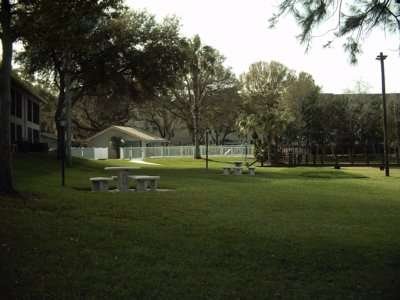
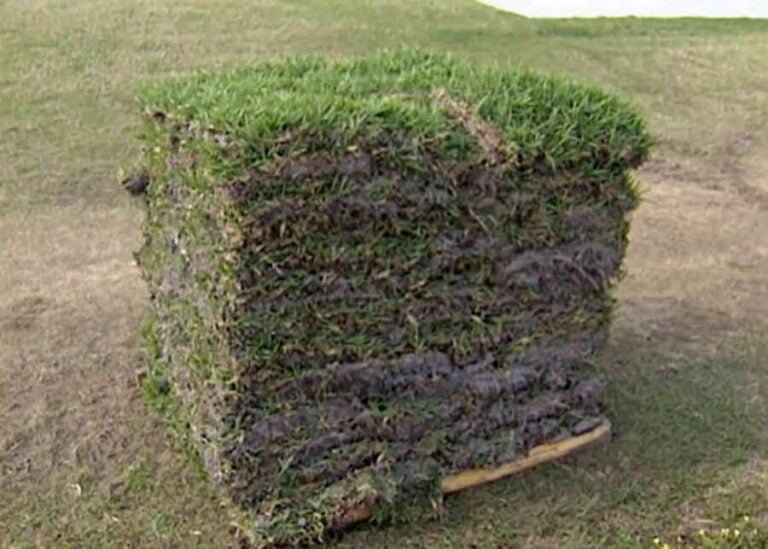
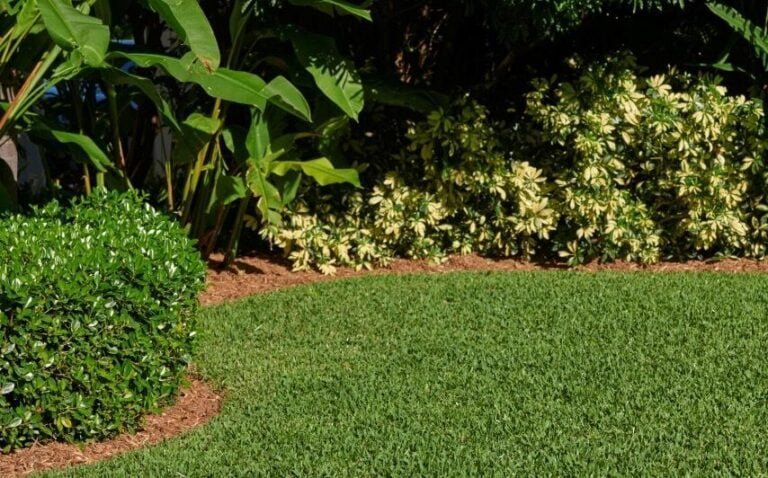

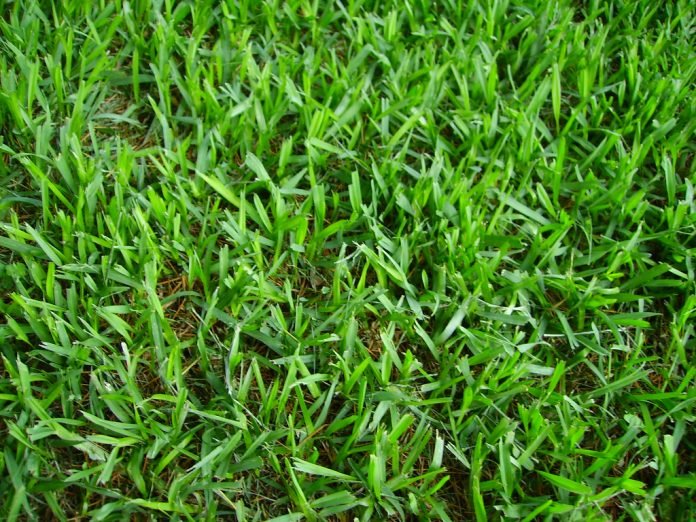
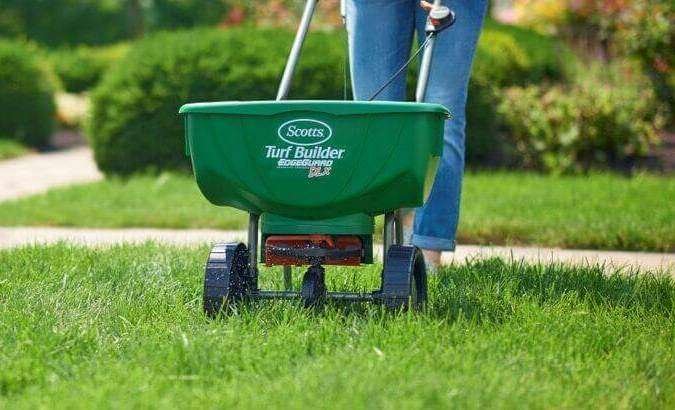
I think the lawn has a disease. Almost the whole lawn has this thing where the blades turn dark purple and then brown and there’s a big ugly patch in our once beautiful lawn. It’s not cold damage, cause it isn’t the whole lawn, and it doesn’t seem to be happening to anyone else. Why is my St. Augustine turning purple?!!
Hello Kiliko,
Usually diseases occur from hot humid weather, shade, and over watering in St. Augustine grass. Sometimes lawns can receive frost in spots and not the entire lawn. When this type of turf has cold damage the blades do turn purple and then brown. Also St. Augustine grass around a pool area will turn this color if the pool overflowed from rain. If it is happening only to your lawn it might not be treated properly, like over fertilizing, too much water, high rate of weed control.
Kurt
what do you recommend for a weed killer? We have St. Augustine and Floritam and cannot kill our weeds..I have used Image, Scotts weed and feed, and these don’t work….
Hello Barbara,
I understand how you feel about weeds taking over your lawn. They can be difficult to control. Chemicals that are available treat only weeds that are listed on the label of each product. Therefore it is important to identify the type of weeds in ones lawn before purchasing a weed killer. If you continue to have little success using products only available to the consumer, I recommend hiring a state certified lawn spray company. The chemicals that they use produce better results and can only be purchased only by them.
Thanks,
Kurt
Kurt,
Please help. I live in Tampa Fl. and recently we experienced some of the coldest weather a few weeks back. My Floratam sod I put down 3 months ago has turned yellow all over. Is it dead? I see a few green blade throughout. I’ve read elsewhere brown mean dead but can’t find out what yellow means. What should I do I raked it yesterday which removed a mound of dead yellow grass and leaves. Should I fertilize? Water more (we have been getting rain here and there and in the morning I feel the grass and its damp.)
Please help
Hello Jason,
When St. Augustine grass is damaged from extreme cold weather it will turn yellow with purple tips, and then will turn brown. Almost everyone in Tampa has brown lawns now. That does not mean everyones lawn is going to die.
St. Augustine is capable of bouncing back when warm weather comes back in the spring. The fact that you have some green blades is a good sign it is going to be o k. It was good that you raked out the leaves because too many leaves can suffocate a lawn, and keeps sunlight from reaching your grass which can turn it yellow. Wait until springtime to fertilize. Do Not water more, only water every two weeks during the winter. Since you are getting rain and the ground is wet, stop watering until it completely dries out. Too much watering also turns St. Augustine grass yellow. By the way I live in Clearwater.
Thanks,
Kurt
Thank-you Kurt,
I’m still curious why everyones grass in my neighborhood turned brown first not yellow and mine turned yellow and never turned brown. It wasn’t a lot of leaves that I raked out preventing sun light. My neighbor put the same kind of sod a few weeks after mine. After the cold his lawn turned completely brown but now its looking pretty good with lots of green blades everywhere. I spoke with him and he said he hasn’t been watering nor have I. Well I guess the grass is always greener on the otherside. Sorry to be a pain.
Can’t thank you enough you eased my worries,
Jason
I live in Florida and have St. Augustine grass. Large patches are turning yellow. Here’s the catch: I have fertiliezed it with 17-0-10. After I did that, the yellowing began. I had not fertilized in over 6 months before that. So, I gave it some ironite. While the grass didn’t get worse, it also didn’t get better either (not any greener). We have not had a lot of rain – just a moderate amount. AND my neighbor’s lawns on both sides of me are perfectly green and lush. Not sure what’s going on. Could you help?
Tim,
Yellowing areas could be from the disease “Anthracnose” a fungus found in St. Augustine grass. IT could have
been in early stages and the fertilizer made it worse turning it yellow. Check the blades of grass early in the morning
for black spots. ( IF this the case apply liquid fungicide, dry out areas first, cover blades thoroughly,do not water after ).
It is harder for me to diagnose a problem without being able to inspect your lawn. Remember to treat your lawn soon
with insecticide for chinch bugs are starting to become active.
Kurt
All (personal experience & opinions only),
Below is my own personal experience with maintaining my St. Augustine grass. I too live in North Florida and have St. Augustine grass. I’m getting sparse blade yellowing throughout my yard. I use a shallow well that has plenty of rust for irrigation. I may be over watering & will cut back to 2, 35 minute zone sprays a week until we start getting some rain. That said, I see most St. Augustine lawns in my subdivision suffering & some dying. Many home owners have replaced their sod several times since 2006.
Making matters worse the EPA has made most fertilizer manufacturers remove the higher conc. of Atrizine which were desperately needed for our Southern St. Augustine grasses to control weeds. Scotts still identifies their Bonus S Plus as a fertilizer & weed controller. EPA has made them remove most of the Atrizine & it no longer controls even dollar weed. In fact, they recently refunded me several hundred dollars in their weed & feed products that no longer kill weeds (note, still a very good fertilizer).
I’ve been purchasing other brands of weed killers you spray from your garden hose & that helps, but does not do what the higher levels of Atrizine did!
I have resodded my front lawn as well (make sure you use the heavy duty weed killers on the ground before you sod. Wait several weeks to insure the weeds are dead. Drop a thin layer of top soil on top of your Florida sand & then sod. St. Augustine needs good top soil & has a difficult time handling sand alone.
Hope this info helps,
Oh, one more thing- not sure how I got some areas of burmuda grass growing in my yard, as I think it got mixed in with some of the St. Augustine sod. That said, I am not unhappy about it. The burmuda grass seems to be more resistant to bugs, fungus, etc. it’s skinnier blades still match up with the wider St. Augustine blades in the summer & when kept mowed looks great.
John,
Thanks for sharing your experience and information on maintaining your St. Augustine lawn. I am sure this will be helpful for others who also take personal care of their own. I know your lawn will be an example of what a landscape can be.
Kurt Kmetz
Could putting down ace weed and feed slow release and then 5 days later spraying with liquid fertilizer turn the st. augustine grass a dark bronze and make it stop growing and look like it is semi-dying ??
Ironically, the grass along the driveway still looks great, and i am sure i put the granular there, so maybe the spray guy missed that 50 length of grass and the liquid iron did not damage it.
just trying to figure out why this happened and if my grass will come back??
thanks
Nelson,
Weed control is probably the chemical that damaged your lawn. You will find out in due time if the areas are going to die. I do not know when you put it down, if the temperature was too hot to apply a weed and feed this can happen. If too much was put down this can happen. Did the lawn spray company treat the same area with weed control? Do they know you are also treating the lawn between services? I recommend calling them and letting them know. You should not have to be doing anything since your paying them for lawn care. I worked for lawn spray companies for 10 years and never burned a lawn from liquid iron, but it can happen. If you are not satisfied with your service tell them, if you already have and no results cancel them and find another.
Kurt
Hi Kurt:
yes, i kinda thought it was the weed and feed.
1) I put ace weed and feed down, on april 20 and followed the instructions.
as I recall the temperature was moderate that day..early morning
2) unknown to me, the spray company came april 25 and
a) sprayed 20 gallons of 33-0-17 Iron fertilizer
b) put down Manor weed control
c) put down Hawkeye weed control
within hours on april 25 when i got home, I noticed the grass was a terrible bronze like color LOL…
It has now been 20 days since the first application and my grass
a) is still bronze colored
b) some small areas are tan and dying
c) overall it is not growing as it should
I have used ace weed and feed in the past and it did a great job. However, unfortunately, in this case, it appears too much weed and feed did some damage. I am hoping most of it will come back.
I have some bernuda creeping in from the golf course, and I am happy …I keep telling it to come on in, faster LOL….I am sick of wasting money on Water for this st. augustine grass, not to mention chinch bugs, fungus, etc.
I have a feeling that after 20 days, the grass that was going to die has done so and the rest that has not, will come back once all the chemicals are leached out.
Oh by the way…see if you can solve this mystery.
There are 50 long areas along the driveway on both sides and along the property line that were not damaged and are growing like crazy and are nice and green.
I know that I did put ace weed and feed on those spots…and I think that the company spray guy did NOT put their weed control there ( i assume it was liquid), and therefore it did not get overdosed and looks great LOL
I always had a great lawn in Miami…where I did all the work myself, the only difference was that I had my own well, so I could irrigate frequently, along with using scotts turf builder and using liquid chinch control as needed.
Up here in central florida it is like a losing battle….probably terrible soil, no rain, water restrictions, chinch, etc…most of the lawns in this community look absolutely terrible..
thanks for your response
Nelson
ok..problem diagnosed.
I had another lawn company come over and he said that my lawn has massive fungus, thus the bronze color. Probably caused from too much nitrogen. So He will treat for fungus.
I got rid of the original company which never sent a tech to see the lawn, but simply told me on the phone to water more LOL
Hopefully the new company will get rid of the fungus and my lawn will survive.
How many minutes per zone do you water in the winter. We are restricted to one day a week. Live in central Florida.
Thanks for your help.
Sunny,
During the winter months the growth rate for lawns slows down compared to during the summer. Watering once a week is sufficient for it to receive the proper amount of water needed. Set each zone for 40 minutes and water in the early morning hours. Do Not Water when temperatures are around or below freezing to avoid any damage to your lawn, wait until it warms up to turn it back on.
Kurt
You said to use slow release fertilizer, is 6-6-6 ok to use now on floratim ?
Lynn,
I believe you mean Floratam St. Augustine grass. 6-6-6 is a fertilizer that is used for plants and shrubs. You need to use a fertilizer formulated for lawns with slow release nitrogen. Some numbers used are 24-2-11 or 26-2-16, it depends on the product. Go to your local garden center and ask the attendant for a slow release granular lawn fertilizer, for the type of grass that you have. They should have products available now that are on sale. Scotts brand fertilizer is excellent for lawns. Remember to follow the directions on the label for amount and rate of application.
Kurt
What is the best type of grass for Central FL – specifically, the Clermont area?
Does bahia, zohia & St. Augustine come in seed form or must one buy sod? Which of the three is the cheapest?
Jim,
I believe you mean Zoysia not Zohia. All three types of grass are good for central Florida (Bahia, Zoysia, St. Augustine). I have an article named “Types of Florida Grass” under category Types Of Florida Grass, that has information pertaining to each kind. This can help you decide which type of lawn is best for you, since there are factors to be considered. Consider the amount of sunlight you receive, what is required to maintain each type, plus their individual characteristics and appearance.
All three types of lawns are established from sod, but Bahia can done by seeding. However, I recommend sodding for best lawn establishment, and for a healthier lawn in the future. As far as which is the cheapest I would say Bahia, but it depends on what the landscaping companies in your area charge. Ask around for estimates on each type. Remember to think about what type of lawn will you be the happiest with years from now.
Kurt
Hi Kurt,
I have been having a problem with my St. Augustine lawn where large areas are dying. I have a lawn service that treats it once a month for pest control, weeds, fertilizer, etc. I have noticed that the runners are growing up in the air in many areas especially around the dying areas. If I am not careful, my foot catches on the runners and trips me up as they are growing up and looping over. I have never seen them do this before. Any idea what would cause it? My lawn service said I need to add top soil to the dying areas and blamed it on washed out soil. I added top soil to all those areas but it did not help.
Ann,
Has your lawn service checked for Grubs? From your description it sounds like that the area in your lawn is infested with White Grubs. Grubs feed on the roots of St.Augustine grass and when there is an infestation the turf will roll back like a carpet since the root system is gone. You can actually pull the turf up with your hands. The roots are probably gone and that is why the runners are doing what you describe.
To be absolutely sure someone needs to dig with there hands (wearing gloves) down in the soil at least 4-6 inches and locate the grubs. Check inside and around the edges of the areas where the problem is. White grubs are creamy white C-shaped beetles with brownish heads and have hairs on the tip of their abdomen. When mature they are 1/4 – 2 inches long. Grubs can also be brown in color. Either way you should see them for they are very noticeable when mature. Even if you don’t find any they can still be there, you just simply missed them.
The areas need to be treated with Granular Grub Bait Insecticide. The chemicals that lawn spray companies use are not labeled for Grubs, since a bait needs to be applied. When grub problems occur the company should identify the problem. Since grub treatment is not part of their regular service they will most likely charge extra for it and it can be somewhat expensive. Grub Bait can be purchased at garden centers and be applied by the homeowner as long as one follows the directions and applies it correctly.
Thankyou for your comment and feel free to ask any further questions.
Kurt Kmetz
Thanks Kurt. We checked about 12 spots and found no grubs but we purchased and applied grub bait over the weekend in case we missed the grubs. Thanks for your help.
Hi Kurt,
I have put Bayer weed control and Spectracide insect control down on my lawn. After about 2 weeks, I see a few spots on my lawn turn yellow and purple. Was it the result of the weed control that was put down. The Bayer weed control was not for Floratam. I was afraid that my lawn is Floratam. Is there any way that I can reduce the damage to the lawn from the chemical of the weed control.
Thank you for your help Kurt.
Dominic
Dominic,
If the weed control you used is not labeled for St. Augustine Floratam grass and you have that type of turf, it can burn your lawn. The only thing is if it is not labeled for your type of grass, there should be damage to your whole lawn, or in very large areas, rather than just in spots. Perhaps those spots were treated heavier than the other areas in your lawn.
Time will tell if it has damaged the roots. You can try to water those areas heavily and keep the roots moist to dilute the chemicals, but it might be too late and the damage has already been done. If it has just burned the blades and not effected the roots, new grass should grow back. Hopefully that’s the case.
If those spots die off and need to be replaced with plugs or sod, wait at least 14 days before planting to be on the safe side. If the areas areas are small the runners (roots) that St. Augustine grass grows will spread and eventually fill in those spots. It will take quite sometime to fill in, but since it is almost summer they should grow faster than in winter or fall. Keep the spots moist to encourage new growth.
Remember it is getting close to the end of the window (temperature too hot) for some weed chemicals to be used on St.Augustine grass. This could have also added to the cause of the damage. Read the label on any weed control chemical (herbicide) used during the summer months for temperature range, before applying.
Thanks,
Kurt
Kurt,
What are your thoughts about placing Floritam this time of year (Late January) in the Tampa area? We had a septic tank replaced and the entire front yard is bare. I’d like to sod now rather than wait until spring. Thoughts?
Rick,
I recommend waiting until at least the end of February to be on the safe side. This winter some locations in the Tampa Bay area have experienced close to or freezing temperatures. All it takes is one night of a hard freeze and newly planted turf can be damaged hurting it’s establishment, causing problems down the road. It takes St. Augustine grass at least 30 days to be fully established, and during that time it is crucial for it to grow with a good solid foundation.
Kurt
Thanks Kurt, I’ll wait at least a few weeks.
Another question: I have torpedo grass invading my back yard. The sod is only 5 years old and has been professionally maintained. The torpedo grass keeps advancing. I plan to re-sod in the spring. If I start using Round-Up on it now am I likely to kill, once and for all, the torpedo grass so that it won’t come back? Same question about some Bermuda Grass also invading. Thanks again for your help.
Rick,
Applying “Round-Up” to the problem areas should kill off everything including the turf. If you plan to re-sod in the spring this would be a good way to prepare for it. You probably will have to retreat the areas between now and then because some of it could come back, especially the Bermuda grass. Plus, new weeds can pop up while waiting to sod.
Kurt